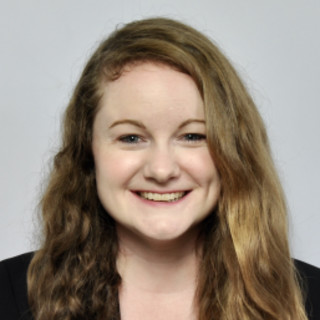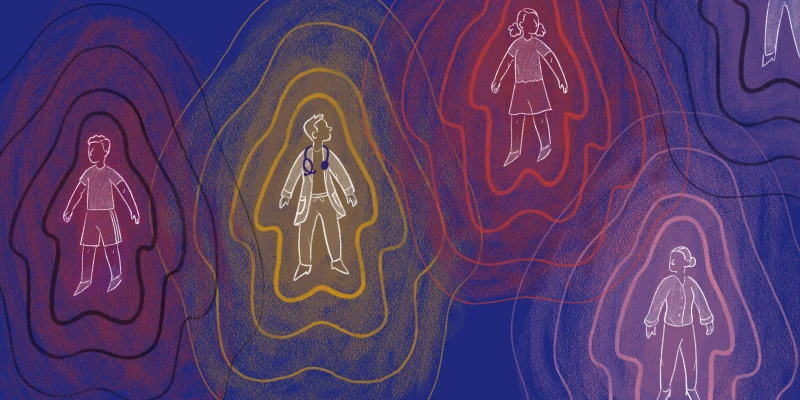“What drew you to this program?”
It’s one of the most common questions I’ve heard applicants ask during this virtual residency interview season. It’s an easy question to start with when a group of nervous fourth-year medical students join a Zoom breakout room with a group of tired residents. It’s always nice to start the Q&A on a positive note. Though I'm planning to apply to pediatrics, I’ve consulted with friends to confirm this question is frequently asked across many specialties.
Unfortunately, I’ve come to dread this question. Invariably, the response I’ve heard is, “The people!” When reflecting on their own interview experiences, residents talk about the fun conversations they had at the pre-interview dinner and the quick interactions they saw between residents and attendings in the hallways of the hospital – moments that allowed them to picture themselves thriving at that program. Their rank lists were ultimately swayed, at least in part, by these interactions, which this year’s applicants can’t see.
To be clear, I’m glad residents like the people they work with. Regardless of how one might prioritize factors like location, call schedule, and research opportunities, getting along with the people you work with for 70-plus hours per week is a universal goal. As an applicant trying to distinguish which program might be the right “fit” for me, though, it's hard to sit with the fact that I only get to experience a watered-down, Zoom version of this essential element of creating a residency rank list.
When the AAMC suggested that all residency interviews be conducted virtually this year, I started hearing from applicants and program leadership that the major disadvantage would be applicants not getting a “feel” for each program. Program leaders across the country put their best efforts into showcasing their small details, creating applicant websites, pre-recorded lectures, and hospital tour videos, in addition to having residents host virtual “socials” with applicants. Despite these efforts, I can confirm the challenge of appreciating the unique “vibe” of each program in a virtual format. This feels particularly important for the residency and fellowship matches, where applicants this year might sign a contract to live in a place they have never even visited.
Perhaps this means that programs within the same field are more alike than we think. After all, is it really possible that the Match algorithm alone is responsible for creating residency classes where the vast majority of people “love [their] co-residents”? The people who sign up to talk to applicants might be biased towards having positive thoughts about their programs, but the trend may also suggest that most people would be happy at a lot of programs on their rank lists. In my case, when I chose pediatrics, I signed up to join a field full of people I would mostly get along with, regardless of where I match.
I’ve started thinking about how I might respond to the “why this program” question when I’m a resident. I hope I’ll be able to agree that I like the people at my program. As I make my rank list, though, I’m weighing things like location, opportunities, and schedules just as much if not more than my impression of “the people.” Perhaps I feel particularly indifferent about Zoom social events, but it feels unfair to put too much weight on short interactions with a handful of residents over a virtual platform. Once I’m fully settled into my own program, I hope to challenge myself to think critically about what aspects of the program are most important to both my day-to-day life and long-term career.
Could this mean that virtual interviews for residency should continue to be offered as an option? There are some obvious advantages of virtual interviewing, like students saving thousands of dollars on travel, which is particularly important for low-income students. There are likely countless other less obvious advantages, like decreasing bias against women and members of groups underrepresented in medicine. Personally, having a fuzzy blanket across my lap made the 100-plus hours I spent sitting in the same chair looking at my computer a little bit more comfortable. If we recognize that we choose “our people” when we choose our specialty, maybe we can work towards creating an equitable system that gives students the choice of whether to travel for an interview. Despite the unconventional format of this interview season, perhaps time will show that things still work out in the end, even virtually.
How important do or did you find in-person interviews in meeting "your people"? Share and reminisce in the comments.
Sarah MacLean grew up in the suburbs of New York City before attending The University of North Carolina at Chapel Hill. She is currently a fourth-year medical student at the Icahn School of Medicine at Mount Sinai and applying into pediatrics. She is particularly interested in a career that integrates primary care medicine with research and advocacy. She is a 2020–2021 Doximity Op-Med Fellow.







